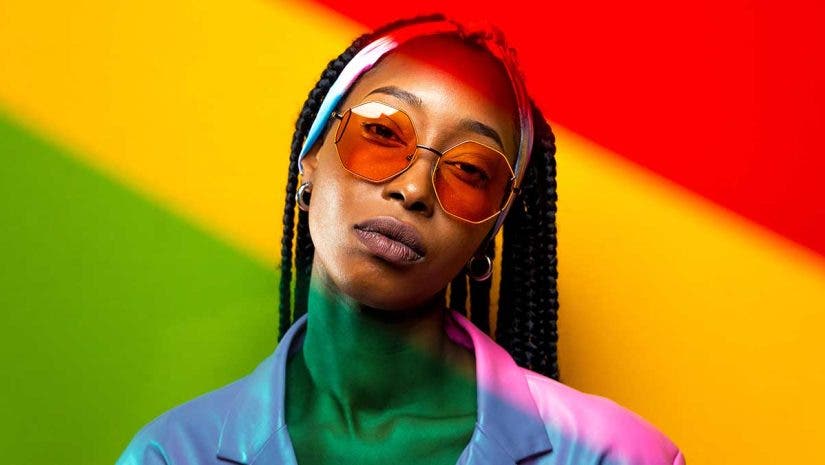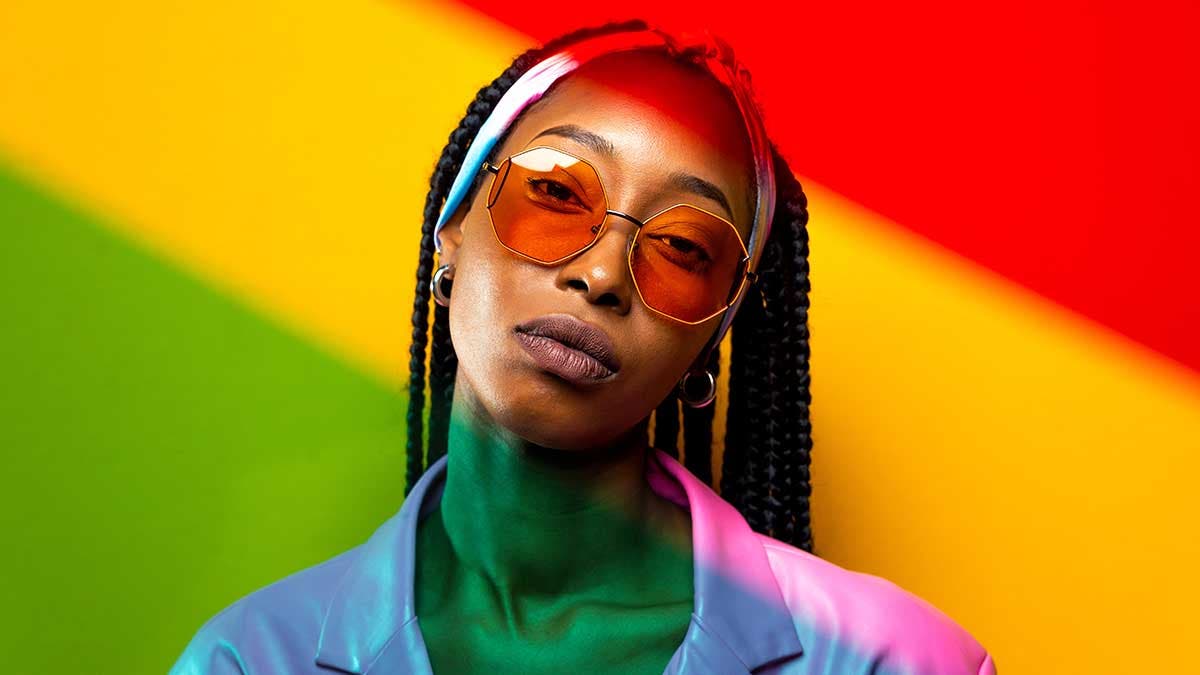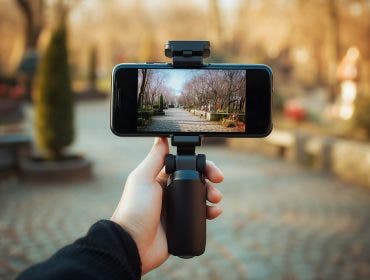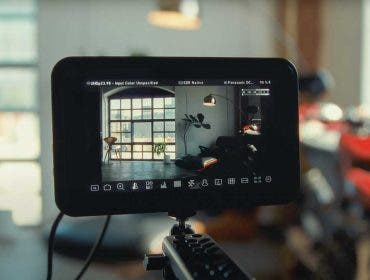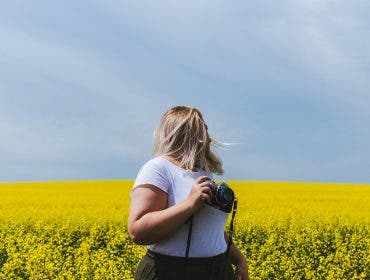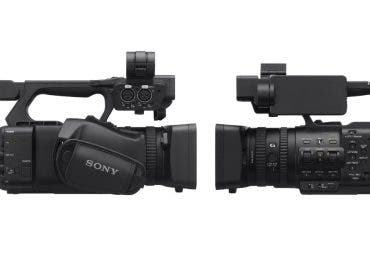Photography is an art form where light plays a pivotal role. In fact, the English word photography is derived etymologically from the Greek words phos (light) and graphis or graphí (stylus or paintbrush). Combined, it roughly translates to “drawing with light.” As such, the way you manipulate and color light can dramatically affect the mood, tone, and overall impact of your images. Two popular tools photographers rely on to add color to their lighting setups are color gels and RGBW LED lights. While they serve the same purpose (to control and alter the color of your light sources), they do so in fundamentally different ways. When we compare gels vs. RGBW LEDs, they each have their own advantages and disadvantages, so it’s important to understand the differences before making a decision.
Color Gels vs. RGBW LEDs
Color gels are thin sheets of colored material of varying degrees of transparency, typically heat-resistant polycarbonate or polyester, that project their color when placed in front of a light source (such as lighting fixtures or windows), allowing you to modify the color of the light output. You will often hear them referred to as color filters, lighting gels, or simply gels when working on set. They come in a wide variety of colors and densities and have been a staple in photography and film production for decades. Color gels are available in sheets or rolls of varying sizes. They can be easily cut down to suit your unique lighting needs, allowing for a great deal of customization.
Pros of Using Color Gels vs. RGBW LEDs
Affordability
Color gels are relatively inexpensive, especially compared to the cost of purchasing RGBW LED light fixtures. Color gels can be reused multiple times, making them a cost-effective solution for photographers on a budget.
Variety of Colors and Textures
Color gels come in a huge selection of colors, from subtle pastels to bold, vibrant primary colors and everything in between. There are also textured gels available that allow you to create interesting lighting patterns and effects, giving photographers tremendous creative freedom to experiment with different looks.
Compatibility
With color gels, you have the flexibility to use them with just about any type of light source, such as flashes, continuous lights, and even natural light. This versatility eliminates the need for you to be restricted to a particular type of light source, giving you greater creative freedom in your lighting setups.
High-Quality Color Rendering
When used in conjunction with high CRI (Color Rendering Index) light sources, color gels can produce very accurate colors. This is particularly important for photographers working with color-critical workflows that require precise color temperature control.
Portability
Lightweight and easily transportable, color gels are an excellent choice, especially when you’re working on location. Their minuscule footprint allows you to carry a wide array of colors in your camera bag without feeling overburdened.

Cons of Using Color Gels vs. RGBW LEDs
Fragility
Sometimes, a pro can also be a con. Since color gels are so thin, they can be quite delicate and are susceptible to tearing, melting, or warping if mishandled or exposed to high temperatures for extended periods. Treat your color gels with care, or be prepared to replace them frequently.
Reduced Light Output and Limited Control
Although color gels offer the ability to modify the color of your light source, they do so at the cost of reduced light output. They also do not provide independent control over the intensity of the gel’s color. Instead, the color intensity is directly linked to the brightness of your light source. This limitation can be challenging when your workflow requires precise and subtle color control.
Setup Time
Using color gels with lighting fixtures can sometimes be quite time-consuming, especially if you need to cut and attach the gels to fit inside a fixture or when working with multiple light sources. This can negatively impact your workflow, especially when working in fast-paced environments.
Heat Sensitivity
Color gels are susceptible to overheating when used in conjunction with high-powered light sources, often leading to them warping or even melting. You will want to take special care when using color gels with continuous light fixtures, where the light sources tend to remain on for extended periods and can get quite hot.
Color Shifts
Over time, color gels can fade or change color due to prolonged exposure to light and heat. This can lead to inconsistencies in your light output, requiring additional color correction work during post-production.
Color Gel Recommendations:
Rosco Photo Lighting Filter Kit, 12 x 12″ Sheets
Key Features
- Professional-grade Rosco filter kit for advanced photo lighting control
- 20 versatile colors in 12 x 12” sheets for diverse lighting effects
- High-quality, durable materials designed for studio and field use
- Easy-to-use filters for quick lighting adjustments and creative expression
- Ideal for color correction and adding dramatic colored lighting to shots
- Enhances mood and atmosphere in photography with a variety of hues
Rosco 20 x 24″ Color Effects Kit
Key Features
- Professional-grade Rosco 20 x 24″ Color Effects Kit for enhancing photography & videography projects
- Includes 15 vibrant, 20 x 24″ gel filters selected from Rosco’s extensive color range
- Each filter is deep-dyed on a heat-resistant base, designed for longevity under high-intensity lights.
- Versatile design allows for custom cutting to fit any camera kit
- Ideal for creating saturated, eye-catching colors on set
RGBW LEDs vs Color Gels
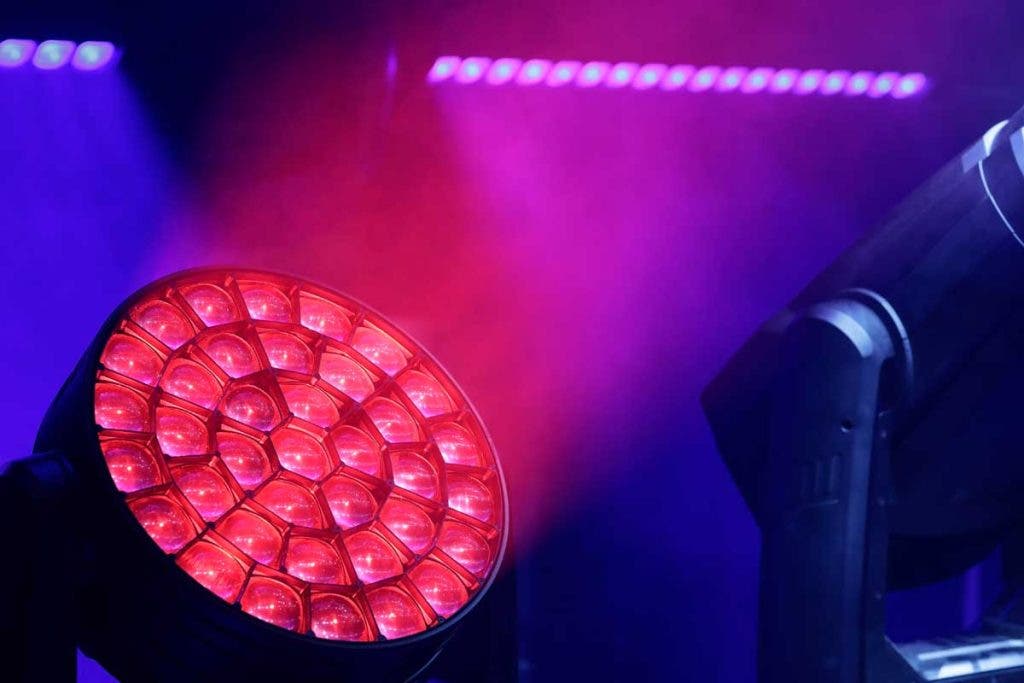
RGBW LEDs, short for Red, Green, Blue, and White Light-Emitting Diodes, are advanced, versatile lighting fixtures that are highly energy efficient. They typically operate cooler than traditional “hot lights” as well, making them much easier to work with on set. Composed of individual red, green, blue, and white LEDs, they can produce a virtually limitless number of colors through precise intensity control of each light. They can be controlled electronically, often via a remote or app, allowing you to easily and precisely adjust the fixture’s color temperature, luminance, and saturation.
Pros of Using RGBW LEDs vs Color Gels
Infinite Color Possibilities
One of the most significant advantages of RGBW LEDs is the ability to create a near-infinite range of colors by adjusting the intensity of the red, green, blue, and white diodes. This gives you a great deal of creative control and flexibility in your lighting setup.
Ease of Use
RGBW LEDs are incredibly user-friendly. Most models come with intuitive controls, either through physical dials, remote controls, or apps for your smartphone or tablet. This allows you to make real-time adjustments without needing to be physically next to the fixture, which is especially handy when they are mounted in hard-to-reach areas.
Energy Efficiency
RGBW LEDs are known for their energy efficiency. They consume less power compared to traditional lighting equipment, reducing your energy costs and making them more environmentally friendly to operate. They also produce less heat, which can be beneficial when shooting in small or enclosed spaces.
Precise Color Control
With RGBW LEDs, you have precise control over the exact hue, saturation, and luminance of your light output. This is particularly useful for photographers working with color-critical workflows who need to precisely match specific colors or want to create intricate lighting setups using a multitude of colors.
Color Gels vs. RGBW LEDs Durability
Compared to color gels, RGBW LED fixtures are typically much more durable. They don’t tear, melt, or warp under heat, and can withstand a considerable degree of abuse (within reason!).
Time Efficiency
Since RGBW LEDs don’t require any physical gels, you can save a considerable amount of time that would otherwise be used to attach and fine-tune gelled light fixtures. Changing colors or creating gradients can be done instantly by rotating a dial or just a few clicks, making them ideally suited for fast-paced scenarios.
Built-in Effects
Many RGBW LED lights come with built-in effects like alternating colors and rainbows, along with presets that mimic lightning, the flickering of a television, or lightbars found on ambulances or police vehicles. These features can add a creative edge to your photography and videography without requiring additional equipment or complex setups.
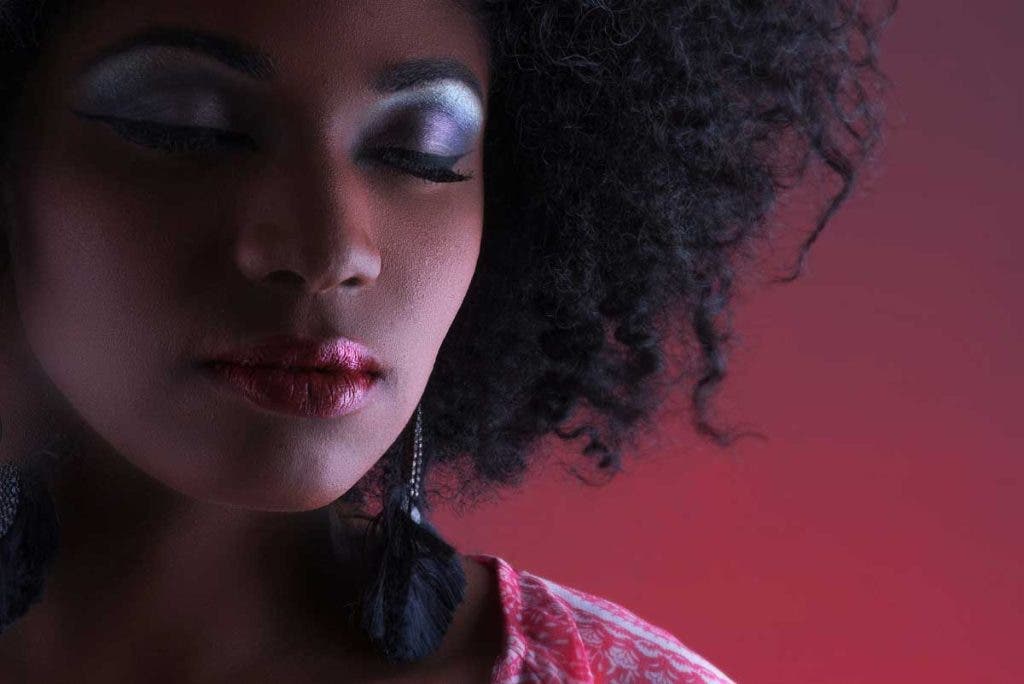
Cons of Using RGBW LEDs vs Gels
Cost
The initial investment with RGBW LED lights, especially high-quality models, can be quite high compared to the relatively low cost of color gels. While they offer more features and flexibility, the upfront cost may be prohibitive for budget-conscious photographers, particularly those just starting out.
Color Gels vs. RGBW LEDs Bulkiness
Although RGBW LED fixtures are generally quite portable, they are still considerably bulkier and heavier compared to carrying a few sheets of color gel. This can be a hindrance for photographers who travel frequently or need to pack light.
Learning Curve
Although RGBW LEDs are user-friendly, they do come with a degree of learning curve, especially if you’re new to the world of photographic lighting. Understanding how to blend colors and properly dialing in settings to achieve the desired color output can take some practice.
Color Gels vs. RGBW LEDs Color Accuracy
While RGBW LEDs can produce a near-infinite amount of colors, achieving perfect color accuracy can sometimes be challenging, especially when working with more inexpensive models. Some models may produce colors that are slightly off from what you intend, particularly in the lower-end options. This can present problems for photographers working with color-critical workflows that need to precisely reproduce specific colors.
Color Gels vs. RGBW LEDs Dependence on Power
All RGBW LED lights require a power source to operate, either from batteries or an external connection to a wall socket or a power distribution unit. This limitation can present challenges when filming in remote areas with limited access to electricity or during extended shoots where battery life becomes a concern.
RGBW LED Recommendations:
Aputure Amaran F21c 2×1′ 100W RGBWW Flexible LED Mat Fixture, V-Mount
Key Features
- High-performance, versatile LED mat fixture perfect for filmmakers, videographers, & photographers
- Features RGBWW LEDs with comprehensive color control and a tunable CCT range from 2,500K to 7,500K
- Quick and convenient setup with a compact, folding X-Frame for easy positioning and adjustment
NanLite FS-300C RGBW COB LED Video Spotlight
Key Features
- Versatile all-in-one RGBW monolight, ideal for photography and video production
- Offers a broad range of 2,700K to 7,500K color temperatures and 36,000 vibrant hues
- High-quality construction with a Bowens Mount for compatibility with numerous light shapers
- Intuitive controls and remote control options via NANLINK mobile app or separately sold devices
- Delivers 34200 lux (3177 fc) of 5600K daylight-balanced light at 1 meter
Godox TP8R 8′ RGBWW LED Pixel Tube Light
Key Features
- Expansive color temperature range from 2,000K to 10,000K for dynamic lighting options
- Full 360-degree hue adjustment enabling millions of color possibilities
- High pixel density for smooth transitions and realistic lighting effects
- Versatile lengths (2′, 4′, 8′) to accommodate various creative setups
- Multiple connectivity options, including wireless CRMX and wired DMX
The Best Tool for the Job: Color Gels vs. RGBW LEDs
Both color gels and RGBW LEDs are widely used options for adding a splash of color to your images. The ideal choice depends on your specific needs and budgetary constraints. Color gels can be an attractive choice due to their affordability and ease of use. However, RGBW LEDs offer greater control over color output and brightness, making them ideal for complex lighting setups and time-sensitive scenarios. Rather than choosing one over the other, incorporating both color gels and RGBW LEDs into your photography toolkit may provide the most comprehensive solution.
